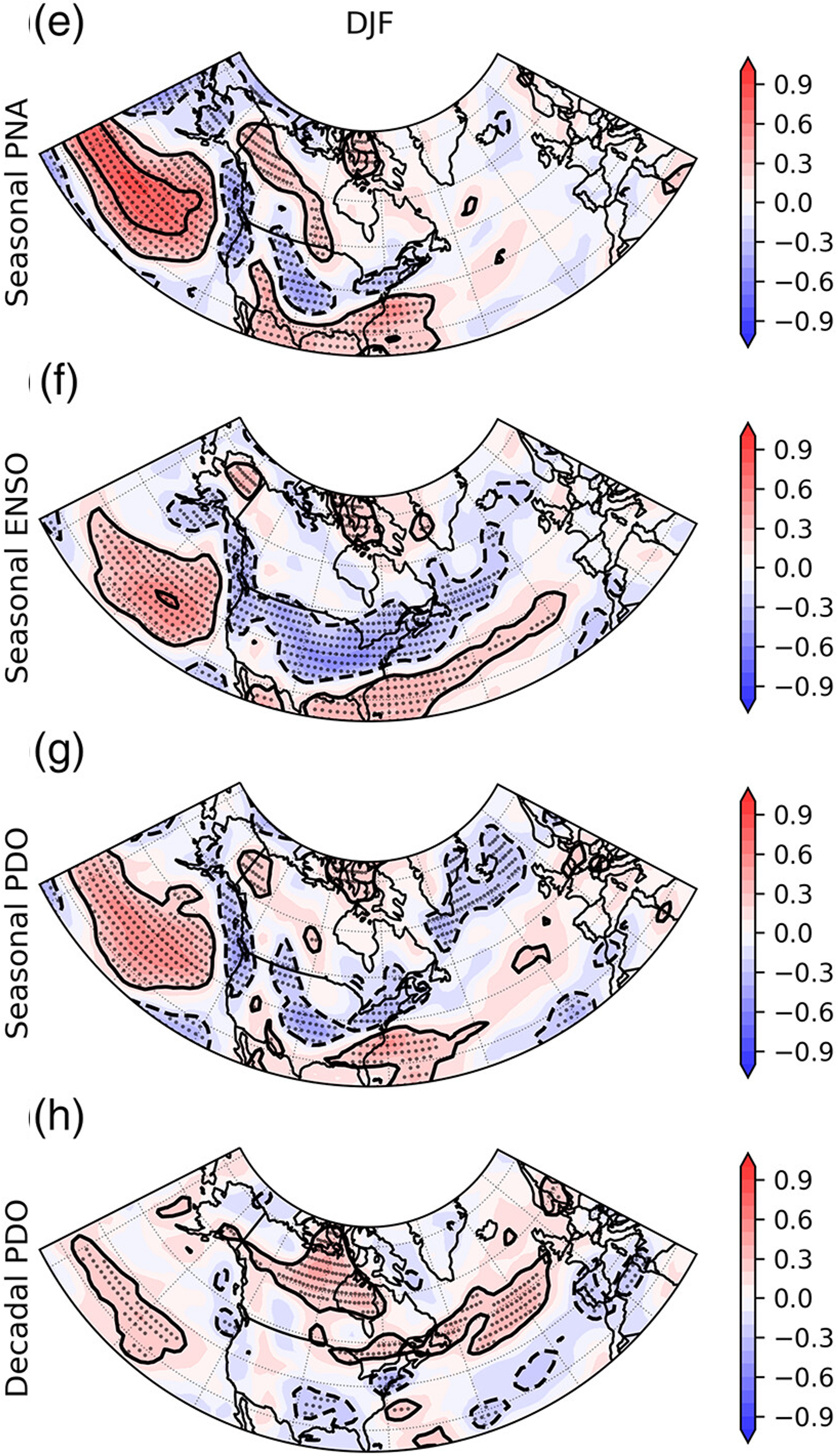
WANG, MULLENS – Role of single and compound Pacific natural variability in extratropical cyclone activity over North America
Hongsheng Wang, Esther Mullens
Article first published online: 8 January 2024
DOI: https://doi.org/10.1002/joc.8349
ABSTRACT: The role of large-scale natural variability in influencing the distribution of midlatitude storm tracks and extratropical cyclones is well known. However, less understood is how compound natural variability—the concurrence of two modes of variability—influences the geospatial characteristics of extratropical cyclones. Here, we evaluate compound modes of Pacific-North American variability—ENSO and PNA with the slow varying PDO—on extratropical cyclones over the North American region during 1950–2013, using an automated tracking algorithm applied to the Twentieth Century Reanalysis version 3 data. Seasonal analysis is conducted on spatial statistics including track, genesis and lysis density and some mean fields in varying compound phases. Spatial correlations of track density with seasonal mean of individual variability indices show that the PNA, ENSO and PDO enhance cyclone activity over Pacific storm track significantly while shifting the North American and Atlantic storm tracks in seasons, that is, equatorward in the positive phase. But the decadal variability of PDO moves the Atlantic storm track poleward, particularly in boreal winter. By comparing to the single Pacific variability impacts, compound Pacific variability results demonstrate the dominance of the higher-frequency modes of ENSO and PNA on extratropical cyclone activity, while the slow varying PDO can modulate the ENSO- and PNA-related cyclone variability. For example, during a negative PNA, cyclones over the North Atlantic become more (less) frequent during a positive (negative) PDO. The in-phase modes of the PDO and ENSO influence Pacific storm track significantly, increasing (decreasing) cyclone frequency when both are positive (negative) in boreal winter. Results are linked to and used to explain the previous findings on how natural variability influences the occurrence of tornado outbreaks and high precipitation over the southeastern United States, Great Lakes, Ohio Valley and other US regions. Understanding compound variability modulations may be useful to predict extratropical cyclone frequency, development and decay regions seasonally and to study the physical mechanisms of extreme weather events.
Read the full publication in International Journal of Climatology.